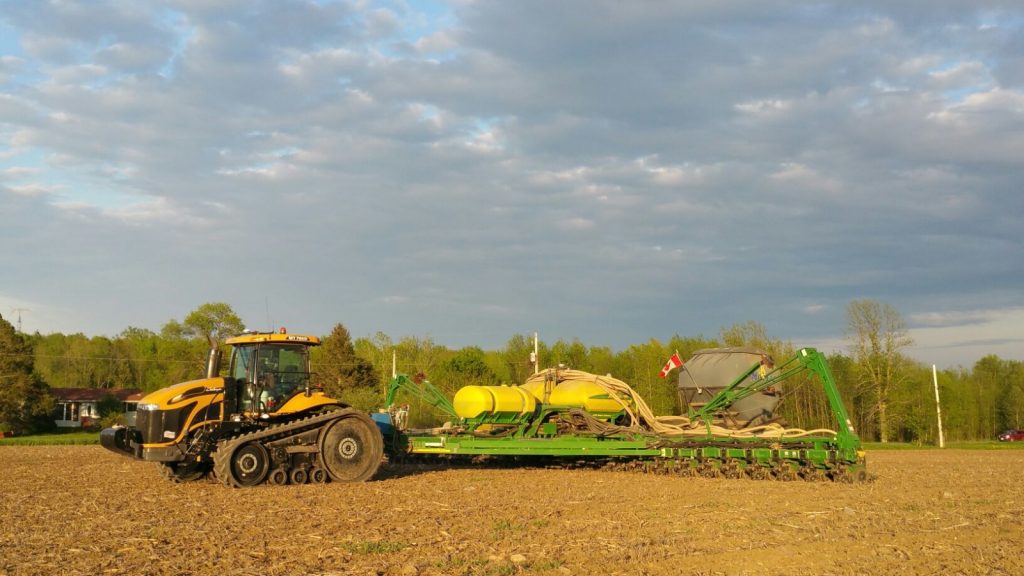Managing Phosphorus to Reduce Losses
Phosphorus (P) is an essential plant nutrient. Sufficient phosphorus fertility means improved root growth and winter hardiness, accelerated maturity, and improved yields. However, when phosphorus makes its way off of fields through runoff or tile drains, it can negatively impact the health of rivers and lakes. Lake Erie is the strongest example of this locally. We have the knowledge and tools to minimize the risk of phosphorus loss while optimizing crop production. There are opportunities this fall to make simple decisions that will lower the risk of P leaving your fields.
Phosphorus is not very mobile in the soil. It may move only millimeters in a given season. For years, it was thought that P is held so tightly to soil that it is only lost when there is soil erosion. We now know that there are also situations in which dissolved forms of phosphorus can be lost. These include runoff shortly after fertilizer or manure application or sub-surface drainage on soils with very high concentrations of P near the surface. The loss of dissolved P can be as or more important than the loss of soil-bound phosphorus, since it is a more potent form and it stimulates harmful algae more strongly.
Ontario research to-date shows that the majority of phosphorus loss occurs during the non-growing season (October-April), often during a handful of events, including snowmelt (Figure 1.). At these times of year, rain that falls and snow that melts is less likely to infiltrate into the soil due to saturated or frozen conditions. Any water that runs off the surface of the soil will carry some P with it. Tile drains can also be a source of phosphorus. For phosphorus to be lost from tile drains it has to move with water through macropores such as cracks (Figure 2.) and earthworm burrows.

Figure 1. The effects of spring runoff on a farm field in the 2017. The soil lost to water erosion carries phosphorus with it.

Figure 2. Cracking in a Brookston clay loam soil.
Best practices to reduce the risk of phosphorus loss
Fertilizer and manure application timing have a large impact on the risk of phosphorus loss. Applications in late summer (e.g. August or September) generally have a low risk of loss. This is because evaporation is high and soils are drier and more likely to absorb rainfall than have it runoff at this time of year. If a broadcast application of P fertilizer is planned, target harvested wheat fields in the next few weeks. Risk of phosphorus loss becomes much greater in the fall, particularly into November and December.
Placement of phosphorus is also critical for reducing risk of loss. Sub-surface banded phosphorus represents the lowest risk. The chance of banded P moving is almost nil. Incorporation reduces the risk of dissolved phosphorus loss from fertilizer or manure application, but must be weighed against the risk of soil erosion. Light incorporation followed a cover crop seeding (e.g. rye) is an example of a strategy to minimize both the risk of dissolved P and soil loss. Phosphorus broadcast and left on the surface late in fall is a high risk practice.
Other strategies to improve placement of phosphorus include applying fertilizer with strip tillage operations or banding P at planting. Producers throughout the province are using these approaches with success (Figures 3 & 4). By applying at least a portion of phosphorus in a strip or band, you can reduce tie-up in the soil and increase efficiency of uptake. In the case of strip till, the P is incorporated and protected and most of the soil is left undisturbed, which can reduce erosion. These practices are a win-win for your bottom line and the environment.

Figure 3. Fertilizer is banded using a dry fertilizer unit during corn planting in Eastern Ontario, 2017 (Photo: W. Schneckenburger)

Figure 4. An air cart is used for multiple purposes, including banding fertilizer, on this farm in Essex county (Photo: H. Denotter)
Finally, consider practices that improve water infiltration. Although losses of phosphorus through tile drains can play a significant role in Ontario, surface runoff is still the biggest risk factor on many soil types. Diverse crop rotations, cover crops and reduced tillage are all practices that improve infiltration and reduce erosion and runoff of phosphorus. When used together, such best practices not only reduce risk of P loss but also improve your bottom line.
Table 1. August 23-29, 2017 Weather Data
